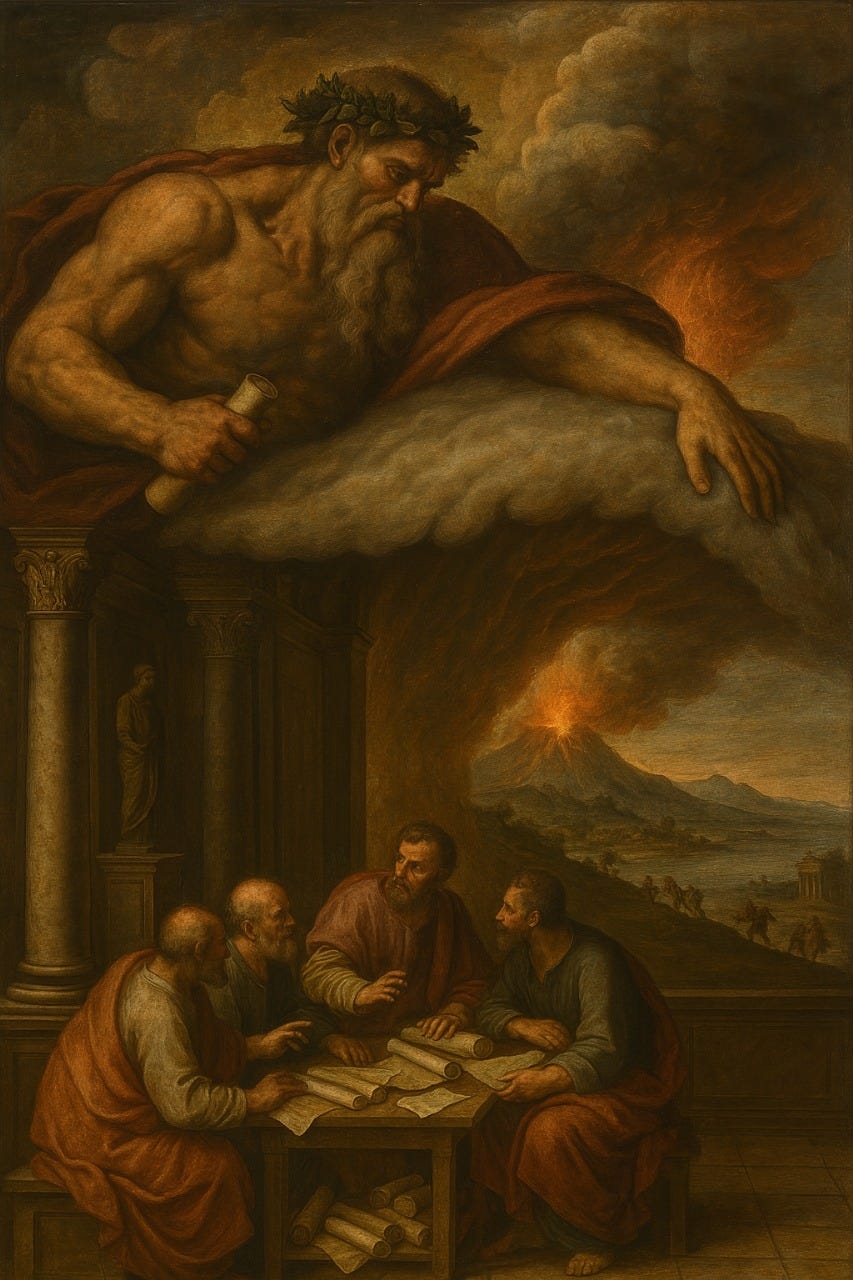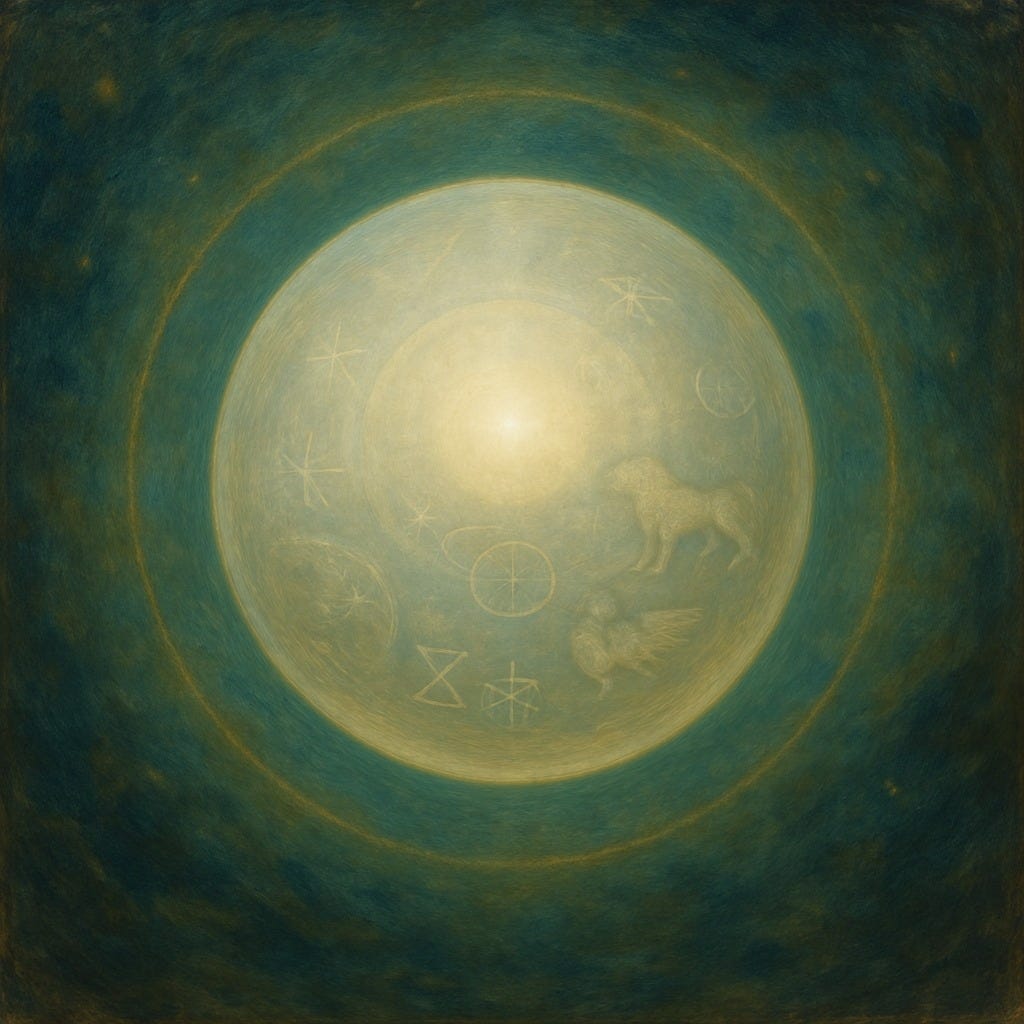This week brought two substantial developments: a new lecture video on Plotinus’ theory of daimones, and the launch of my seminar on Plotinus III.7. I also continued experimenting with GPT-4o’s image generation, which has become a surprising and versatile tool for philosophical teaching and publishing.
Table of Contents:
📹 New Video: Plotinus on Daimonic Tension
🖼 Image Experiments with GPT-4o
📚 Seminar Begins: Plotinus III.7 on Aion and Time
1. 📹 New Video: Plotinus on Daimonic Tension
In this new YouTube lecture, I’m joined by Yitzchok Lowy to discuss chapters 3–5 of On Our Allotted Daimon (Ennead III.4).
We explore Plotinus’ variable theory of daimones: not only are there many kinds of daimones included within the soul’s structure, but the soul itself can become a daimon—or even a god—just as it can fall to the level of a beast or a plant. We connect these ideas to the Timaeus, the Symposium, and the Alcibiades I, particularly in relation to the World Soul as a paradigmatic soul always aligned with its daimonic nous.
We close by discussing the myth of the “choice of lives” not as a pre-incarnate fable, but as a structural feature of human action—one that constantly refers to a higher daimonic standard and therefore lives in ethical tension.
2. 🖼 Image Experiments with GPT-4o
ChatGPT continues to impress with its capacity to generate images that enrich both my lectures and public posts. A few recent highlights:
Vesuvius as a Titan
An illustration of Vesuvius as a Titanic figure burying the Epicurean school of Philodemus beneath ash, leaving it for future rediscovery in Herculaneum. I made this while preparing to teach Lucretius, prompted by David Sedley’s Lucretius and the Transformation of Greek Wisdom. In the coming months I’ll be reading De Rerum Natura with a student—a chance to explore Epicureanism, the ancient school least compatible with Platonism, but not without its charms. The theory of simulacra, for instance, influenced Renaissance ideas about celestial pneuma, and Epicurus' claim that the stars are just as small as they appear is delightful.
The Demiurge according to Vicente Ferreira da Silva
This image was part of an experiment where I asked ChatGPT to select ten quotes from an essay by Vicente and illustrate each for Instagram. With some tweaking, the results were striking. Here, to represent Vicente’s Übermensch-like take on Plato’s Demiurge, we have a Caravaggio-style youth holding new law tablets inscribed with an alien script. It was well received on both Instagram and Facebook by those who follow my philosophical work there.
Cosmic Angel from the Egg
The final image in the O Demiurgo series: a biblically accurate angel, luminous and uncanny, emerging from a cosmic egg. The inhumanism of Vicente’s eschatology often comes across as very fitting for our own times.
The Smooth World
For Daimonic Tension, I used this image to illustrate Plato’s account of the self-sufficiency and smoothness of the world. I used to think Proclus' interpretation—linking the world's smoothness to Hephaestus and its receptivity to the Forms—was a stretch. But after reading Tarrant’s excellent paper “Where Did the Mirror Go?” (on the Alcibiades I), I’ve come around. The mirror-like surface becomes a plausible metaphor for how the cosmos relates to nous: not as a passive recipient, but as a luminous, self-contained field of reflection for intelligible realities like Universal Love, Justice, and Humanity.
3. 📚 Seminar Begins: Plotinus III.7 – On Aion and Time
We’ve officially started the course on Plotinus’ On Eternity and Time (Ennead III.7).
Our first session was dedicated to unpacking the concept of presence. We read Parmenides, especially Fragments 1 and 8, noting how he may be the first philosopher to articulate a concept of absolute presence—but how that presence is not simply assumed. It emerges from within a poetic logic of contrasts: day and night, death and life, truth and doxa. Even in Fr. 8, being remains bounded by figures like Moira and Ananke—signs of a constitutive alterity.
We read this alongside the Theogony, where the gods are said both to “always be” and to be born, and Chapter 11 of the Dao De Jing (tr. Red Pine), which shows how nonbeing can be just as functional, or even more so, than being. Together these texts help us see how presence is never given purely, but rather emerges through a relation to absence.
This tension is at the heart of Neoplatonic metaphysics. Far from asserting metaphysical mastery over what is, Plotinus and his heirs constantly remind us of a divine absence or surplus that conditions all presence—and keeps philosophy from collapsing into a voracious ontology.
Those curious can take a peak at the handout here: https://drive.google.com/file/d/1eZU-VEg0k8PyzRjJ1pFtrcJZyqSr-nvW/view?usp=drive_link






Your remarks about "smoothness" at Timaeus 33b and Proclus' commentary on the passage sent me down a fascinating rabbit hole of reflection—pun intended—on the significance of this concept in Plato (usually denoted by leios, it seems). It comes up more often than one would expect in his corpus.